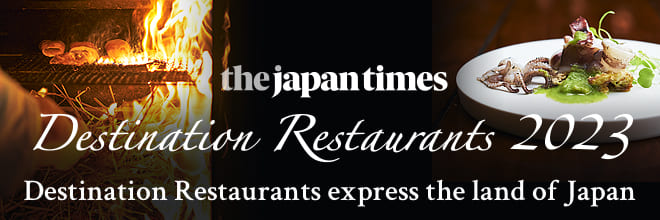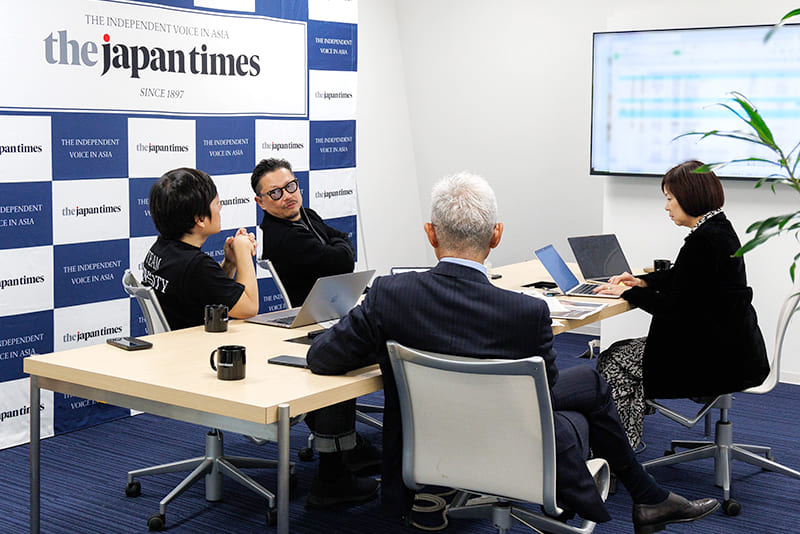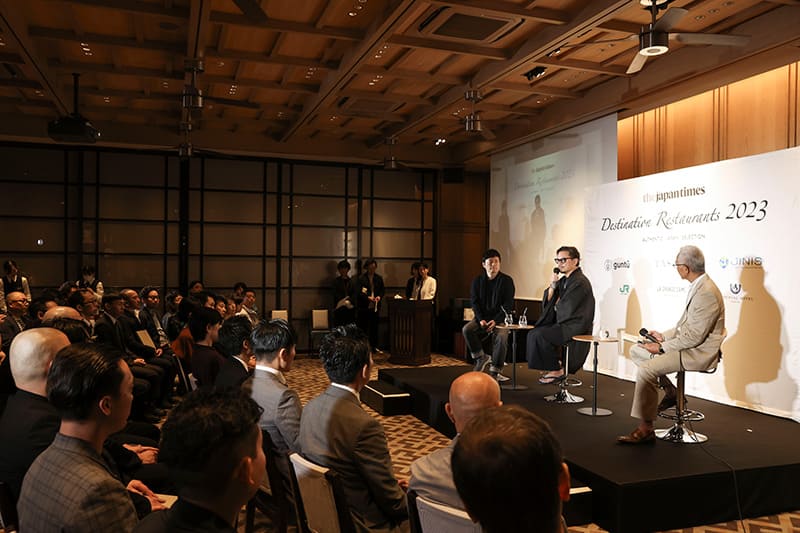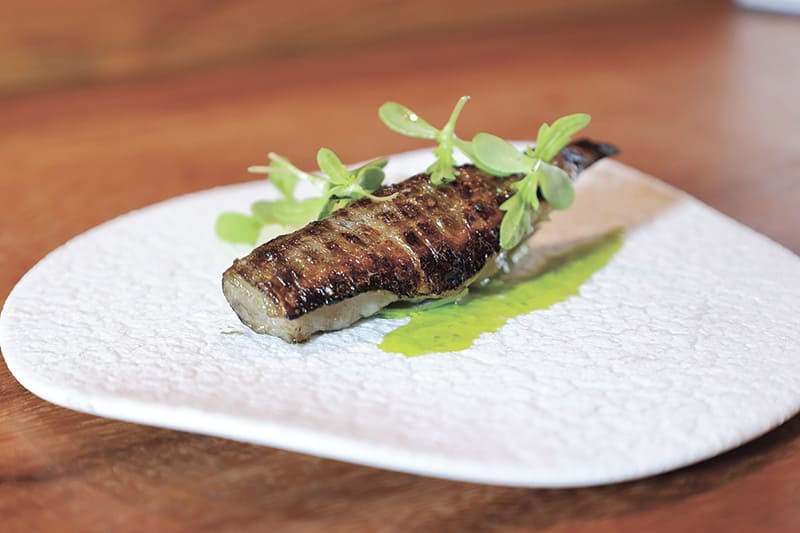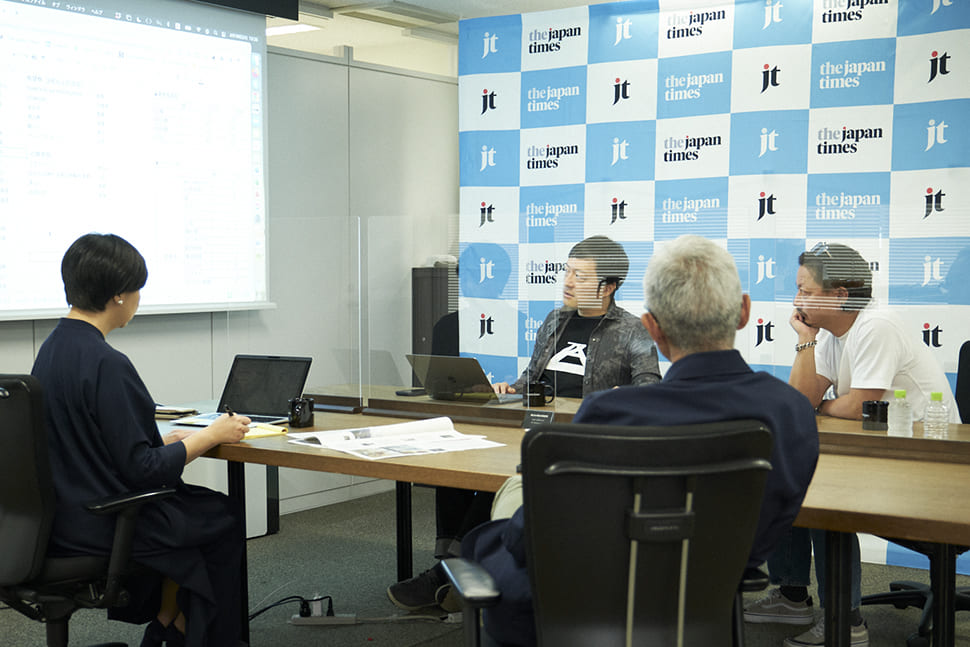December 22, 2023
French cuisine in Yamagata, home of ‘brand’ foods
Destination Restaurants 2023
TRANSLATOR:CARRIE EDWARDS
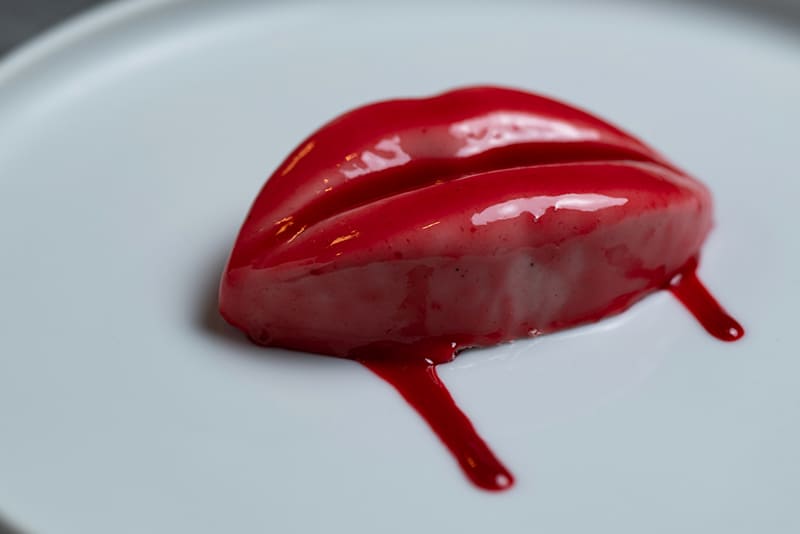
PHOTOS: TAKAO OHTA
Over the past 20 years, French restaurants in regional areas of Japan have improved dramatically in quality while also increasing in number. Even today, however, the Tohoku region has relatively few. Restaurant Pas Mal could be called the sole authentic French restaurant in the city of Yamagata. Owner-chef Yusuke Murayama strives for true gastronomic cuisine. His dishes emphasize classic sauces making extensive use of wine and brandy — a cooking style that has become less common even in France — and the “stars” of these creations are local ingredients. For regional restaurants, using fresh and inexpensive locally sourced ingredients is usually considered an advantage, but the situation in Yamagata is different.
Murayama said: “Starting with cherries and Yamagata beef, foods produced in Yamagata are considered premium-quality brands and distributed at high prices outside the prefecture, especially in the Tokyo area. In these circumstances, they can’t be used at restaurants in the local area, where prices are lower. When local residents go out to eat, they almost always go to an izakaya pub where the average cost per person is ¥4,000 to ¥5,000 ($27 to $34). It has become the norm in these places to use a lot of products from overseas, including vegetables. In other words, Yamagata residents have few opportunities to enjoy Yamagata ingredients when they dine out. I want to change this situation. First of all, I create dishes with the idea that local people should know about the appeal of ingredients from Yamagata Prefecture.”
Featured in these dishes are the bounties of the region, which is blessed with the right conditions for producing delicious foods — the presence of the sea and the mountains as well as extremes of temperature. Sangenton pork and Shonai duck from Hirata Farms are used to make rillettes (spreadable pate). Spear squid is featured in tarts. Main dishes include amadai (tilefish) and venison. Edible chrysanthemums, long grown in the region, appear as a garnish. Locally grown almonds and raspberries are used as well. Also on the menu is the local dish imoni (a soup including taro, meat and vegetables), made with consomme instead of the traditional soy sauce — an ingenious fusion of local ingredients and French cuisine.
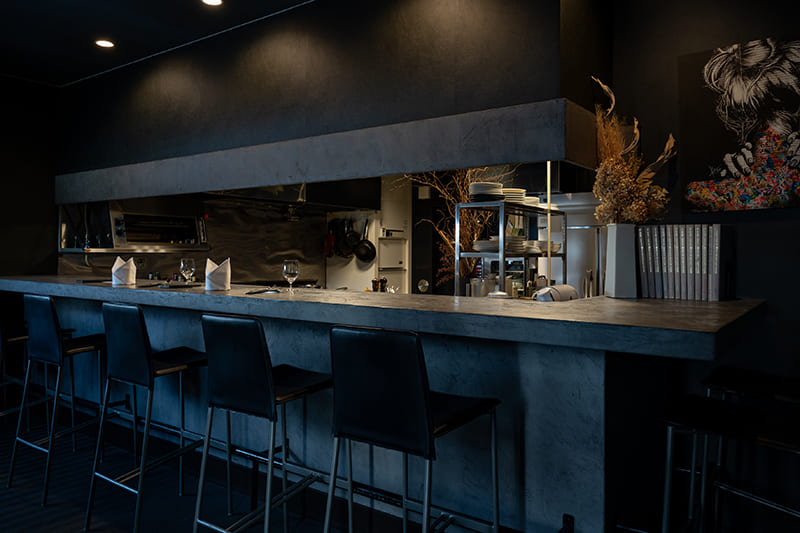
Restaurant Pas Mal
2-3-16, Nanuka-machi, Yamagata-shi, Yamagata Prefecture
https://yamagatafrench-pasmal.com
Murayama opened a bistro in the city of Tendo in 2002. When he moved to his current location and reopened in 2017, he changed course and transformed the bistro into a gourmet French restaurant. The establishment is managed mainly by Murayama and his younger brother Tatsuaki, the maitre d’, who was previously engaged in wine production overseas. At ¥11,000 and ¥16,000 (including tax and service), the dinner course prices are extraordinarily high for the city of Yamagata.
“I want to raise the average dining cost throughout Yamagata Prefecture,” said Murayama. “Last May it was reported that the population of Yamagata Prefecture was a little over 1,040,000. That was a decrease of 1.31% from the previous year — the fourth-largest rate of decrease in Japan. The only way to do business in this situation is to make excellent cuisine that draws tourists. Yamagata specialties like ramen and soba are fine, too, but I think gastronomic restaurants really have the power to attract customers from far away. What I want to communicate to the younger generation is not that you can make more money in Tokyo, but that you can also make a living in Yamagata Prefecture. I often tell young chefs who have trained in Tokyo and come back to Yamagata, ‘I’m raising my prices, so you should raise yours too.’”
People from outside the prefecture (mainly the Tokyo area) currently comprise 80% of the restaurant’s clientele, but the number of local customers is increasing. To further raise awareness among the area’s residents, Murayama periodically carries out collaborations with famous chefs from other regions and reports on them inside and outside the prefecture. Without a doubt, Yamagata Prefecture’s future culinary scene is in the process of transforming.
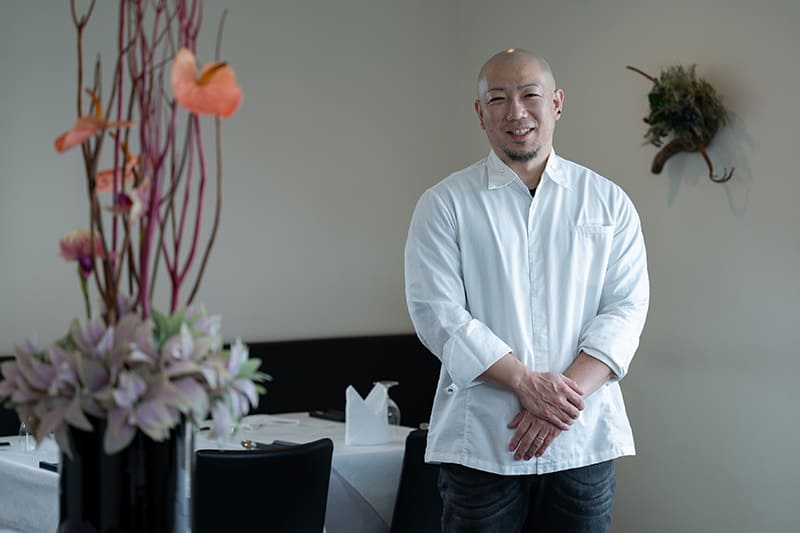
YUSUKE MURAYAMA
Born in 1977 in Sagae, Yamagata Prefecture. After training in his home area and Tokyo, Murayama opened Bistro Pas Mal in Tendo, Yamagata Prefecture, at the age of 25. In 2017 he reopened the restaurant in its current location, changing the name to Restaurant Pas Mal. His younger brother Tatsuaki, who was previously engaged in wine production in Australia, California and Germany, is the restaurant’s maitre d’. Murayama’s son Yuta also helped at the restaurant until the end of 2017.
ブランド食材の産地山形県で戦うフレンチ。
『レストラン パ・マル』は山形市にある唯一の本格フレンチ。場所はJR山形駅から車で約10分。宝珠山立石寺(通称「山寺」)や銀山温泉なども近い。
オーナーシェフ、村山優輔は高級ブランドとして県外に高値で流通するため、地元では入手しづらい食材を料理の主役に据える。地元客にこそ、山形食材の魅力を知ってほしいからだ。
村山は2002年に天童市でビストロを始め、2017年に現在地に移転リニューアル。その際、ガストロノミー路線に変更。ディナーコースで¥11,000〜(税・サ込み)は市内では圧倒的に高額だ。
「山形県の飲食の客単価を上げたいんです。人口減少率が全国4位でも、いい料理を作れば、お客さんが来てくれることを若い世代に伝えたい」(村山)
現在、県外からの客が8割だが、地元客も増えつつある。さらなる山形県民の意識改革のため、村山は他地域の有名シェフとのコラボレーションも定期的に行い、県内外に発信を続ける。
Return to Sustainable Japan Magazine Vol. 31 article list page


